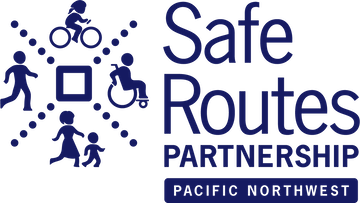We’re beyond pleased to announce that the 2017 Oregon Legislature passed a state transportation funding plan that invests in a cleaner, healthier transportation system to provide safer options for Oregonians, however they travel. We applaud our Oregon leaders for making adjustments to the bill that allowed the Legislature to approve it and move Oregon forward with a transportation plan that will create more affordable and healthy travel options for Oregonians across the state.
In addition to a massive investment in transit and trails of more than $100 million each year, and a sensible focus on “fix-it-first” maintenance funding for our roadways and bridges, new funding from the bill will provide $10 million annual investment for Safe Routes to School street safety improvements - bumping up to $15 million annual investment in perpetuity starting in 2022. This funding is for safety projects to improve safety for people walking and biking in the 1-mile radius of schools (commonly known as the “walk zone”). This level of ongoing, dedicated investment for school travel safety -- and the positive impacts it will have on the health and safety of our communities -- is unprecedented in Oregon, and will ensure more and more youth in Oregon can safely walk and roll to school and in their communities.
This is a big step in the right direction for the hundreds of thousands of students in Oregon who currently live within their school’s 1-mile walk zone. These students do not typically have a school bus pick them up, and many also do not currently have a safe walking route to their school. We know that lower income communities tend to also be the communities that are under-invested in transportation safety; these communities are at risk from traffic exposure on a daily basis. The Safe Routes Partnership advocated for outright prioritization of these communities for funding during the legislative session, and though we did not see that in the final bill, we are still glad to see Title I schools have been prioritized for street safety investments with a lower matching funds requirement (20% vs 40%), which may result in a de facto prioritization.

This success would not have been realized without the tireless efforts of Safe Routes to School community members from across the state and the advocacy of the For Every Kid coalition. Unfortunately, despite many strong voices, the bill does not include any funding for Safe Routes to School programs, an essential piece in helping shift students and families to safe and active travel. We will continue to work with and advocate for more dedicated funding to support school communities in ensuring safe and active travel options for everyone to get to school.

Impact of the Safe Routes to School Program on Walking and Bicycling (2015)
The Oregon Safe Routes to School community has much work ahead:
- To work with city, county, and the state departments of transportation to facilitate and prioritize increased funding for Safe Routes to School infrastructure, and ensure lower-income communities are effectively notified of this new opportunity;
- To work with school districts to educate administrators of this opportunity, and support the creation of school travel plans that will allow them to be eligible for transportation safety investments;
- To continue to work with communities and across departments to ensure other essential needs are met, including other issues affecting absenteeism, street harassment, food access, and more; and
- To continue to work to secure dedicated funding for needed education programs.
We look forward to getting started on this work, and for the bright future ahead for Oregon’s youth.
For more details on other aspects of the transportation plan, read more analysis from our partners at OPAL Environmental Justice, Oregon Environmental Council, and Transportation for America. Read our earlier analysis of the transportation bill.


